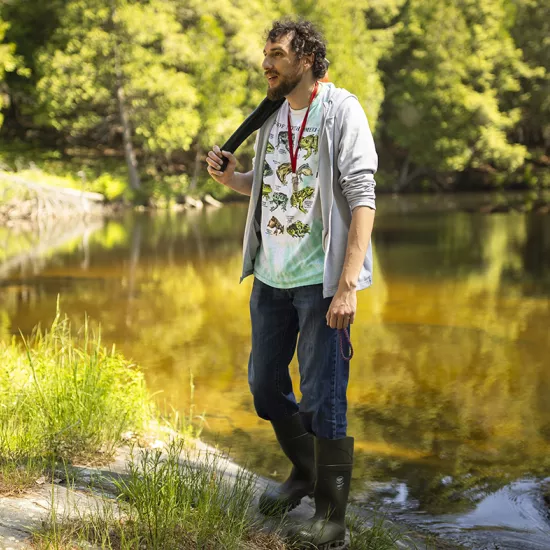Down on the Farm: UTM prof on the closure of Canada's prison farms

In 2009, a government decision to close Canada’s prison farm program sparked a social movement that made national news, pitting the Conservative government against Canadian celebrities and eco-activists who opposed the decision. Carefully examining all sides of the issue can help us understand the complex ways political groups use penal issues to further their own causes, says U of T Mississauga assistant professor of sociology Phillip Goodman in new research published in The British Journal of Criminology.
At the heart of the controversy was a small penal work program comprising six farms and 300 inmate agricultural workers run by Corrections Service Canada.
Politicians argued that it was sound fiscal policy to end the program—the farms were losing money and the program didn’t help inmates attain agricultural jobs after release from prison.
The closures united a disparate anti-Conservative group that included author Margaret Atwood and musician Sarah Harmer, along with eco-activist nuns, anarchists and self-described “hockey parents.” They argued that the prison farms were an asset to local communities, and provided job training and a “transformative” rehabilitative experience for inmates working on the farms.
Goodman and co-author Meghan Dawe analyzed news stories and government reports, and interviewed people on both sides of the debate. They found that the issue had very little to do with actual prison policy, and instead was fuel for various groups to capitalize on issues of fiscal responsibility, crime and punishment, and anti-Conservative sentiment
“Both sides were quite skilled at manipulating the cause for their own gain,“ Goodman says. “American politicians use crime as a wedge issue to appear as if they are the ‘party of law and order.’ In the same fashion, the Canadian Conservative government used the prison farms to bolster their image of fiscal responsibility.” Farm program allies used the issue to oppose the Conservative government.
“There was very little discussion of prisons in a useful way,” Goodman says. “This wasn’t a debate over eligibility for parole, where people’s lives were in the balance. The actual stakes were very low.”
Goodman and Dawe found that both sides of the argument were based on assumptions, not measurable data. “Program cost was a big issue, but it’s impossible to say whether the farm program was earning or losing money,” Goodman says. “The government argued about it as if it were a farm that was competing on the private market. But a prison farm is not a company—it’s just a work location for prisoners, so profit is impossible to quantify.”
“There was also lots of ink spilled over whether prisoners were able to get farm jobs later, but there is no data to back it up,” he says. “There is information about what jobs all prisoners get after release, but it does not measure the outcomes for specific populations coming from prison farms.”
According to Goodman’s research, opponents of the closures were equally lax about hard proof. “The anti-closure group argued that farm work was a ‘transformational experience’ for the prisoners,” he says, recalling an anecdote where a ‘hardened, grizzly prisoner hugged a cow like the mother he never had.’ That scenario conveniently leaves out that two of the farms operated slaughterhouses. Allies of the farms didn’t access data showing the outcomes for inmates and they didn’t bother to talk to very many prisoners about their experiences.”
“Nobody pretends that prisoners picking cotton in [Louisiana’s state prison] Angola is anything other than an activity that offsets the cost of the facility,” he says. “What made the Canadian debate unique was how it was talked about after the threat to close it. The idea of rehabilitation was raised only after the decision to close the farms, not before. Why make the story complicated, when we can have a story about the Harper government being anti-community?”
And what of the inmates who were part of the farm program? According to Goodman, there is no available data that tracked what happened to former farm workers. “It’s unclear whether the inmates found new job placements inside the prison, and what they looked like,” Goodman says. “We don’t know if the government reallocated that funding to another vocational program. There’s no mechanism to track and hold them accountable. “
Teasing apart the tangled threads of the prison farm narrative is important, Goodman says. “Now we know how multiple groups can make punishment issues work in their social and political favour. Recognizing the ways in which this happens allows the public to hold them accountable to see if their claims are reasonable and logical. Let’s start with an honest discussion about what we really want prison farms to be doing, then follow through with measureable outcomes.”



